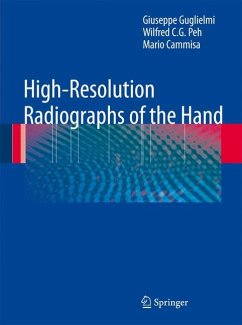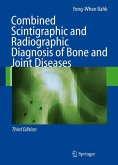This extensively illustrated atlas focuses on high-resolution industrial radiographs of the hand and wrist used in the diagnosis of pathologic conditions, which requires the detection of minute changes. It is structured such that the reader can identify the radiographic skeletal changes and relate them to specific disease entities. The aim is to provide an essential, practical guideline for the recognition of the key radiographic signs in diagnosing various systemic as well as localized diseases that manifest themselves in the hand and wrist. The book is intended for radiologists, rheumatologists, hand surgeons, orthopedists, traumatologists, internists and their residents in training.
Plain radiography is still alive. In many institutions, including ours, conventional radiography has been replaced by digital systems including imaging-plate-based computed radiography and fat-panel detector-based digital radiography. Even for the education of radiation technologists, conventional flm-screen radiography has been de-- phasized, and their education is concentrated on digital systems. Spatial resolution of a conventional system is still far better than the current digital systems, although the dynamic range is wider in the latter system. Industrial flm radiography with small grain size and direct exposure has an even higher resolution, and such hi- resolution systems are something we lost in the transition from the conventional system to the current PACS-friendly system. I am pleased to know that Giuseppe Guglielmi and Wilfred Peh have published this textbook of high-resolution hand radiographs that cannot be obtained with any other techniques. Radiography has always been the most important modality in the evaluation of the hand, and, moreover, high-resolution industrial flms are extremely efective in the evaluation of the hand, particularly for assessing subtle erosions. Hands are not just one of the peripheries of the human body. Tey refect conditions of the whole human body. Not only the metabolic status, but also many congenital disorders are manifested in the hand. Radiographic fndings of the hand are ofen specifc, and contribute to the diagnoses a great deal. Tere have been several publications concerning the radiology of the hand, and they have been well accepted.
Plain radiography is still alive. In many institutions, including ours, conventional radiography has been replaced by digital systems including imaging-plate-based computed radiography and fat-panel detector-based digital radiography. Even for the education of radiation technologists, conventional flm-screen radiography has been de-- phasized, and their education is concentrated on digital systems. Spatial resolution of a conventional system is still far better than the current digital systems, although the dynamic range is wider in the latter system. Industrial flm radiography with small grain size and direct exposure has an even higher resolution, and such hi- resolution systems are something we lost in the transition from the conventional system to the current PACS-friendly system. I am pleased to know that Giuseppe Guglielmi and Wilfred Peh have published this textbook of high-resolution hand radiographs that cannot be obtained with any other techniques. Radiography has always been the most important modality in the evaluation of the hand, and, moreover, high-resolution industrial flms are extremely efective in the evaluation of the hand, particularly for assessing subtle erosions. Hands are not just one of the peripheries of the human body. Tey refect conditions of the whole human body. Not only the metabolic status, but also many congenital disorders are manifested in the hand. Radiographic fndings of the hand are ofen specifc, and contribute to the diagnoses a great deal. Tere have been several publications concerning the radiology of the hand, and they have been well accepted.








